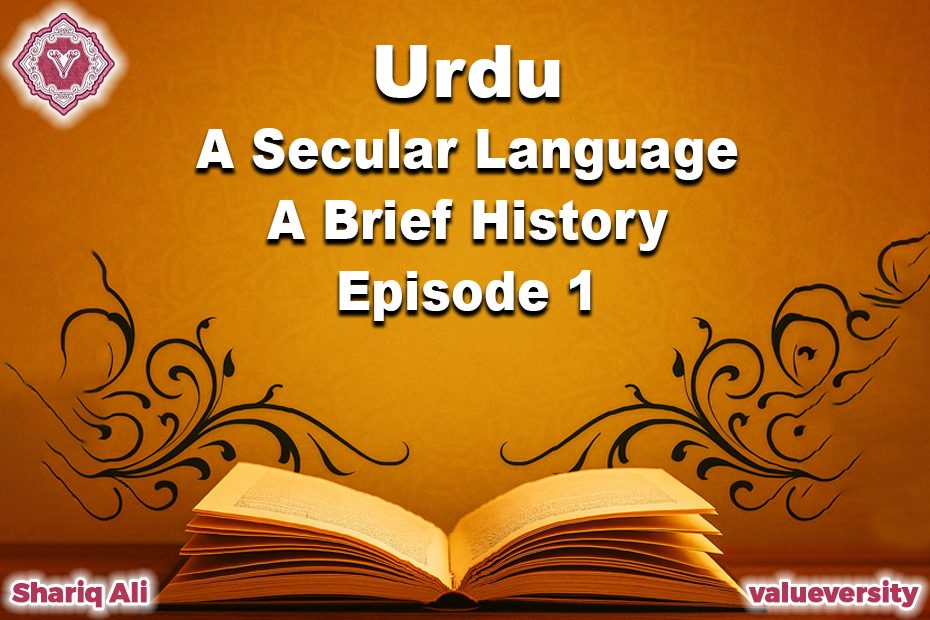Urdu: A Secular Language
A Brief History – Episode 1
Written by: Shariq Ali | Valueversity
Origins: A Confluence of Languages
The Urdu language began in the 12th century in Delhi and its surrounding regions, where languages like Khari Boli, Braj Bhasha, Mewati, and Haryanvi were commonly spoken. These local dialects absorbed words from Persian, Arabic, and Turkish, giving birth to a new language initially called Hindavi or Rekhta. This language became a means of communication across different religions, social classes, and cultures.
Role of Sufi Saints and the Bhakti Movement
Sufi saints and Bhakti movement mystics played a significant role in promoting Urdu. They adopted the language to spread their message in simple, accessible terms. Amir Khusrau is considered one of the earliest poets of Urdu, blending Persian, Arabic, and local dialects in a unique style that laid the foundation for Urdu poetry.
Dakhni Literature: The Evolution of Urdu in South India
In the 14th century, Urdu reached the Deccan region of southern India, where it became known as “Dakhni Urdu.” The rulers of this region, especially Muhammad Quli Qutb Shah, patronized Urdu poetry. His literary works also included words from Telugu and Marathi, expanding Urdu’s vocabulary and range of expression.
Wali Dakhni and the Delhi Literary Movement
Wali Dakhni (1668–1744) introduced Urdu poetry to Delhi. His collection of poems had a profound influence on Delhi’s poets and initiated a new era in Urdu literature. This movement was instrumental in replacing Persian with Urdu as the literary language of Delhi.
Rise of Urdu during the Mughal Era
Under the Mughal Empire, Urdu gained prominence both in royal courts and among the masses. Alongside Persian, Urdu was also adopted as a court language. This period saw growth in both poetry and prose, with great poets like Mir Taqi Mir and Mirza Ghalib giving Urdu literature a new rhythm and depth.
The British Era and the Urdu-Hindi Controversy
In the 19th century, during British colonial rule, a linguistic conflict emerged between Urdu and Hindi. Sir Syed Ahmed Khan declared Urdu as a part of Muslim cultural identity and established organizations like Anjuman Taraqqi Urdu for its preservation. Urdu thus became a symbol of Muslim identity and intellectual resistance.
Status of Urdu after Independence
After the creation of Pakistan in 1947, Urdu was declared the national language. In India, it retained official status in certain states. However, over time, Urdu faced challenges such as a decline in its teaching in educational institutions and limited presence on digital platforms.
The Future of Urdu in the Digital Age
Efforts to promote Urdu in the digital age are ongoing. Websites like Rekhta have made Urdu literature accessible online, and several mobile apps have simplified Urdu typing. These initiatives are helping to connect younger generations with the language.
In Summary
The journey of the Urdu language is the result of the fusion of diverse cultures, languages, and civilizations. Sufi saints, poets, writers, and common people have all played vital roles in its growth. Even today, due to its sweetness, elegance, and inclusivity, Urdu is recognized globally as a beloved and influential language.
